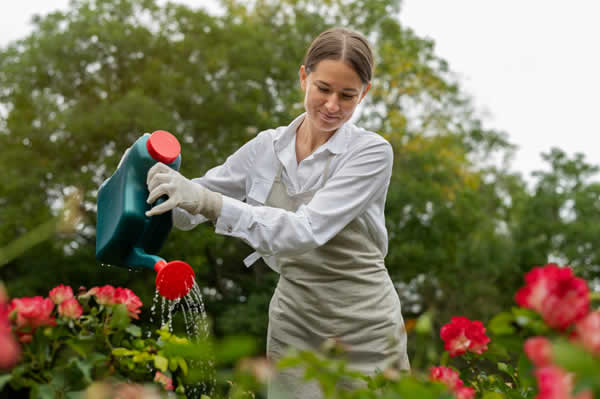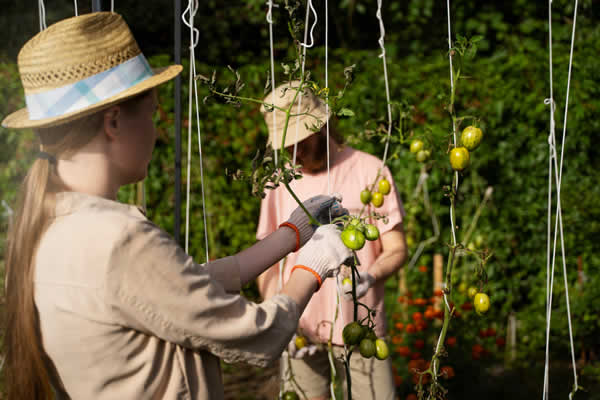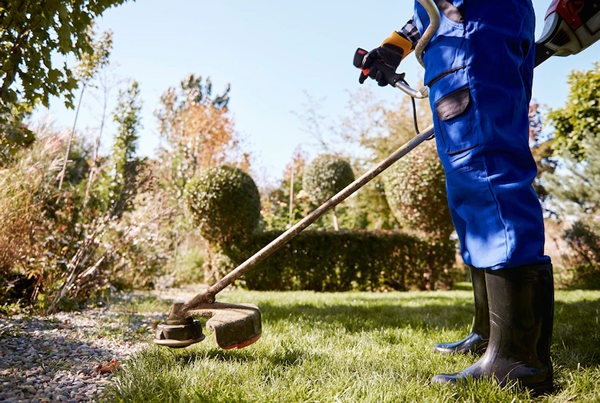Gardening is one of the most rewarding hobbies, but it can also be challenging. When things go wrong in your garden, it can be immensely frustrating, but the good news is that many common issues are easy to fix! In this article, we’ll look at some mistakes gardeners often make and give you simple tips on avoiding them and getting back to enjoying your hobby.

Mistake #1: Poor Soil Quality
Poor drainage, excessive water or fertilizers, or infertile soil can cause poor soil quality. The pH level of the soil can also affect its quality.
Fixes to Improve Soil Quality
Fixes to improve soil quality include adding compost or organic matter to the soil and testing the pH level of the ground. Crop rotation can also help improve soil quality over time, as it helps break up compacted soils and replenish nutrients that previous crops have depleted.
Mistake #2: Overwatering
Overwatering can be caused by giving plants too much water too frequently, not letting the soil dry out in between waterings, or planting in containers and pots with inadequate drainage.
Tips for Avoiding Overwatering
To avoid overwatering:
- Stick to a regular watering schedule and only water when the soil is dry.
- Consider creating a visual reminder to let you stick to the watering agenda.
- Use Vision boadrs to remember to take care of every plant in your garden.
- Plant in well-drained soil and use containers or pots with adequate drainage holes.
Mistake #3: Underwatering
Underwatering can be caused by insufficient rainfall, not sticking to a regular watering schedule, or planting in overly dry soil.
Tips for Proper Watering
To ensure proper watering of plants, use a soil moisture monitor to test the soil’s moisture levels and follow a regular watering schedule. Additionally, ensure to provide plants with additional water during extreme heat or drought.

Mistake #4: Not Pruning or Deadheading
Pruning and deadheading help promote healthier growth, encourage bushier plants, improve air circulation, and increase yields of fruits and vegetables.
Techniques for Pruning and Deadheading
To correctly prune and deadhead, use sharp tools and cut at an angle. Only prune or deadhead when necessary, and avoid over-pruning.
Mistake #5: Using Too Much Fertilizer
Too much fertilizer can cause plant burn and lead to slow growth or death. It can also damage the soil by making it overly acidic or alkaline, harming beneficial soil organisms.
Strategies for Applying the Right Amount of Fertilizer
To apply the right amount of fertilizer, consider the size of the planting area and the number of plants being grown. Follow the recommended application rate on the fertilizer package and use only organic fertilizers to prevent potential damage.
Mistake #6: Not Rotating Crops
Crop rotation helps reduce soil compaction and replenish nutrients lost due to previous crops. It also helps prevent the buildup of pathogens and pests and encourages greater crop yields.
Tips to Implement Crop Rotation
Plan your garden and consider the soil’s nutrient levels and pH balance to implement crop rotation. Also, consider the needs of different crops when selecting a rotation pattern. Make sure to keep track of what was planted in each area of the garden the previous year.
Mistake #7: Growing in Containers that Are Too Small
Choosing too small containers can lead to stunted growth or root rot due to overcrowding or inadequate drainage.
Solutions for Choosing a Properly Sized Container
To choose the right-sized container for your plants, take into account the size of the root system, how much water the plant needs, and the type of soil being used. Additionally, consider how big the plant will eventually become and ensure enough room to grow without becoming overcrowded.
Mistake #8: Planting During the Wrong Time of Year
Planting at the wrong time of year can lead to a poor yield due to unfavorable temperatures, soil conditions, pests, or other factors.

Tips for Learning the Best Times to Plant
To determine the best times to plant, research each plant species and its ideal growing conditions. Consider the climate and length of your growing season, and use a soil thermometer to properly test soil temperatures.
Mistake #9: Not Protecting Your Garden
If left unchecked, pests, diseases, and wildlife can damage or destroy plants. Besides, extreme weather can cause harm to plants if they are not adequately protected.
Solutions for Protecting Your Garden
To protect your garden, use row covers and netting to protect against pests and wildlife. Also, create windbreaks around the garden to protect plants from extreme winds and erect a fence or trellis to block hail or heavy rain.
Mistake #10: Not Cleaning Up in the Fall
Cleaning up in the fall helps prevent pests and diseases from overwintering in the garden and reduces the risk of soil erosion over the winter months.
Tips for a Successful Fall Cleanup
To properly clean up your garden in the fall, remove all dead, damaged, or diseased plant material and dispose of it far away from your garden. Moreover, cover any exposed soil with mulch or compost to help protect it from winter weather.

Conclusion
By learning from your garden's mistakes and changing your approach, you can easily create a thriving, beautiful garden. With patience and the right knowledge, you'll be enjoying the fruits of your labor in no time.
To have a successful garden, read up on gardening tips and techniques and consult with local experts if needed. Lastly, be patient and always keep trying, even if things don’t go to plan.
